It goes without saying that your branding is what sets you apart from your competitors. Your brand may consist of a logo paired with a recognizable color scheme but it should be much more than that. It’s how your customers feel when they interact with your business, how they perceive your products and services, and whether or not they remain loyal over time.
However, your branding strategy should not remain stagnant. With so many changes in marketing and digital trends, it’s only natural that branding evolves as well. If you want your brand to stay competitive, it’s worth paying attention to emerging brand trends and incorporating them into your strategy. Let’s take a closer look at what 2018 has in store when it comes to branding.
8 Digital and Visual Branding Trends to Look For in 2018
Branding trends mentioned below are influenced by consumer behavior, the entrance of Generation Z into the workforce, and the rise of new technologies.
1. Personalization and Authenticity
According to a study from 2015, 91% of consumers expect more brands and companies to do more than just push a sale. With an ever-growing number of brands out there wanting to be heard, it’s no longer enough to get your message out and wait for customers to come to you. Instead, you need to find a way to differentiate yourself from the pack and show the values that your brand stands for.
In other words, you need to establish a personal relationship with your audience by showing them they are not just dollar signs. Engage with your customers by sharing and listening to feedback and by acting like a human.
Some of the brands that make great use of this strategy are Geico and Progressive, both insurance companies that show even “boring” industries can spice up their brand by adding a human element:
2. Immersive Interactions
It’s not a secret that millennials dominate the internet scene. However, don’t forget that Generation Z is now old enough to be entering the workforce and interacting with brands. Both generations being technically savvy, they base their buying decisions on marketing messages they see on social media. As such, your brand needs to evolve and adopt marketing techniques that offer immersive interactions with consumers.
A few examples include using:
- A chatbot that allows consumers to interact with your brand and get targeted relevant messages directly to their messaging inbox.
- A live chat option on your site that offers help and advice as they browse your site.
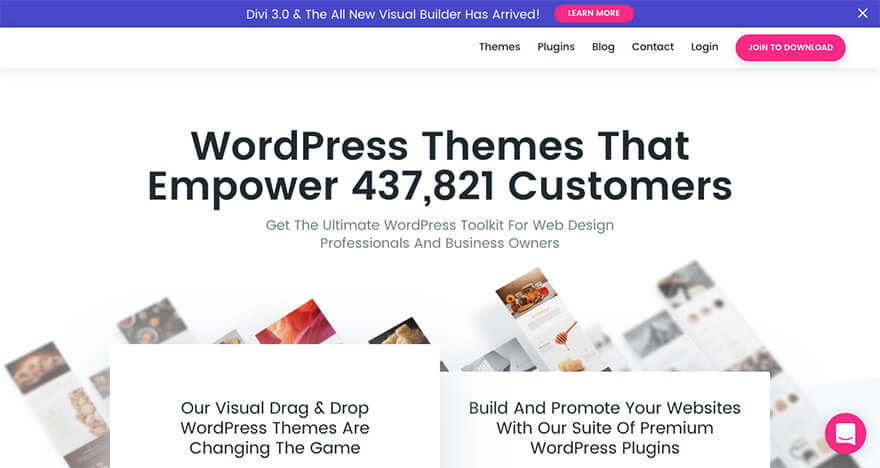
- Using social proof that shows real-time purchase activities with an app like Proof.
However, keep in mind that immersive interactions aren’t limited to an online world. They can begin on a social media channel where your audience hangs out and continues in the real world. Consider the Campari masterclass event during the London Design Festival, where the brand used an improvised pop-up bar.
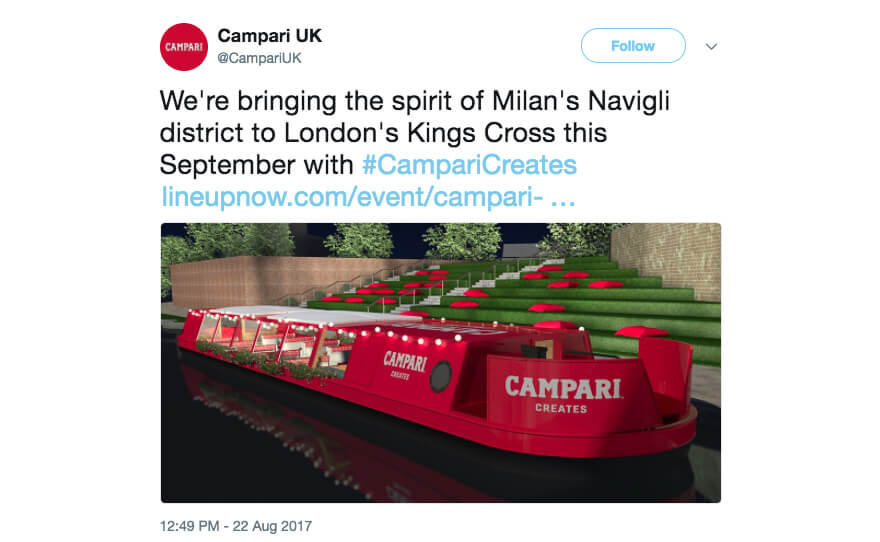
With timed social media promotion, Campari made their consumers aware of the opportunity to not only create their own Campari cocktail but also the chance to learn about the history of the brand.
3. Video Growth
The use of video has been on the rise and it continues to grow. Using Facebook Live, Instagram Stories, and YouTube present a great opportunity for your brand to grow and connect with your audience instantly. Brands like Intel, Rebook, Dove, Facebook, and others have been using video to share their tips, connect with their audience, and provide value for their consumers with inspirational and uplifting stories that generate interest and show how their products can be used to change everyday experiences.
4. Branded Communities
Directly tied to the prevalence of social media usage are branded communities. Big brands recognize this as an opportunity to connect with their audience. It’s also a way to create a space where they can share their passions and interests.
It’s also a great way to learn more about your customers and get valuable feedback from them on your current offering as well as shape new products and services. It allows you to position yourself as an authority, but do keep in mind that a great branded community is structured as a place where everyone is equal. This removes the pressure from your consumers while still allowing you to share a promotional message without coming off as too sales-y.
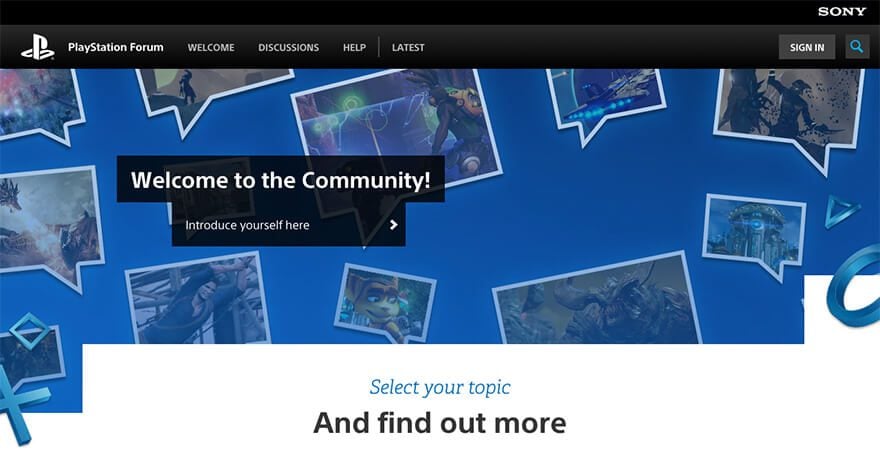
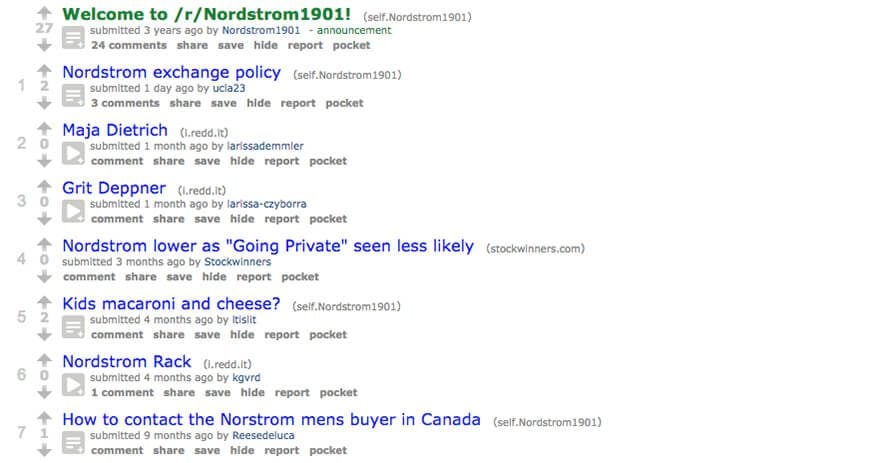
5. Influencer Marketing
We’ve mentioned that millennials and Generation Z are turning to social media to learn about brands and their products. Thanks to social media as well as the popularity of blogging, it’s easier than ever to establish yourself as an authority in a certain field and influence the decisions of many. This leads to a natural rise in importance of influencer marketing which is why many brands are turning to finding and collaborating with brand ambassadors in an effort to market their products.
Brands like Old Navy, GAP, and others are investing in working with influencers and making use of user-generated content not only on Instagram but on Facebook, Twitter, and other social media platforms:
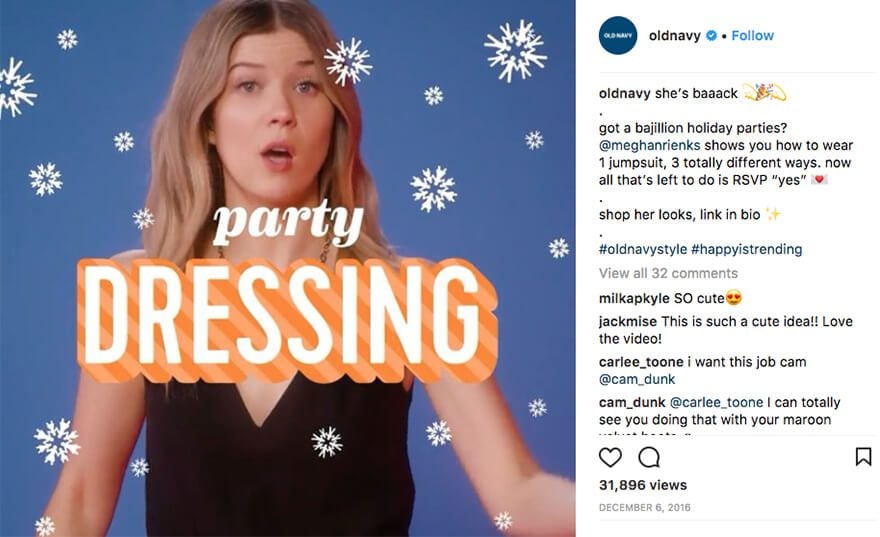
6. Purpose and Activism
According to Digital Branding Institute, 91% of millennials would rather endorse a brand that stands up for a cause. Showing your brand cares for a cause is crucial to making a connection with your customers and clients. It humanizes your brand, shows your company’s values, and makes it easier to align with the values of your target audience.
It helps your customers understand the reason behind your product or service and how their money will be spent. Partnering with local charities, non-profit organizations or simply voicing your opinion on current events is a great way to give your brand a voice, value, and purpose.
Consider JetBlue’s Soar With Reading campaign. Since 2011, the company has partnered with Random House and non-profit organization FirstBook to provide children in low-income neighborhoods with free books, raising $2.75 million in book donations.
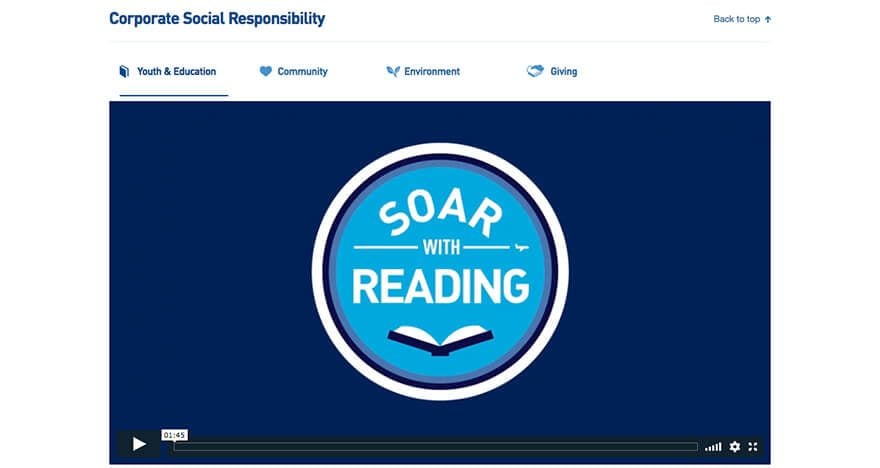
7. Vibrant Colors and Bold Typography
Thanks to Material Design, the trend of using vibrant colors isn’t slowing down anytime soon. Many companies are going back to using strong primary colors. Others are experimenting with bright gradients, color overlays, double exposure, and different photo saturations.
Thanks to libraries like Google Fonts and Adobe Typekit, designers are no longer limited to the same selection of fonts from 20 years ago. Many brands are turning to using bold typography throughout their branding materials.
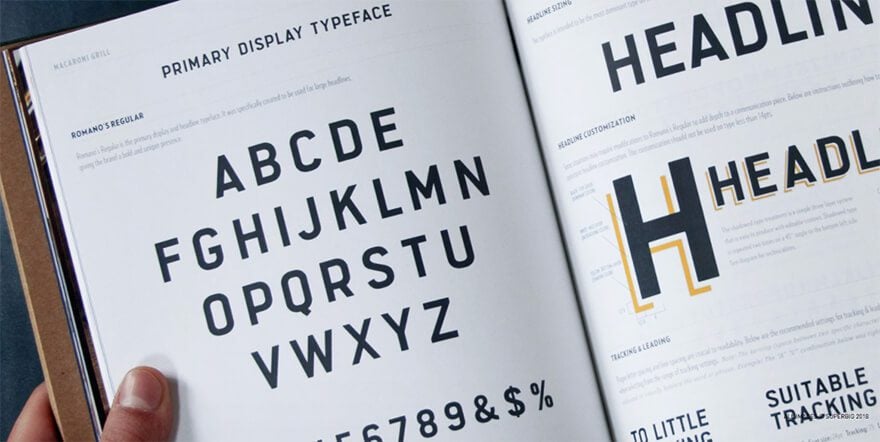
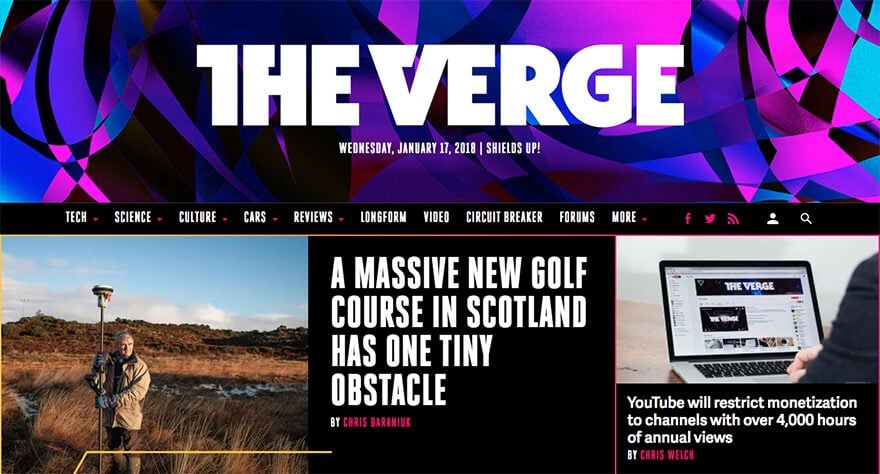
8. Simple and Minimalistic Design
Even though the colors are brighter and the fonts are bolder, many brands favor simple and minimalistic design and whitespace. Logo designs have been simplified, in some cases reduced to nothing more than typography. The rest of the branding collaterals offer minimal text and focus on imagery. This trend is even more obvious when you look at company’s websites such as Ontraport or Uber:
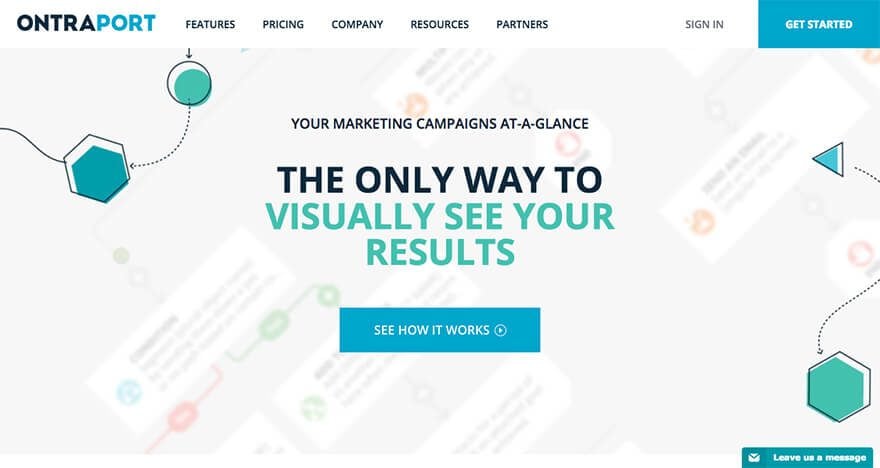
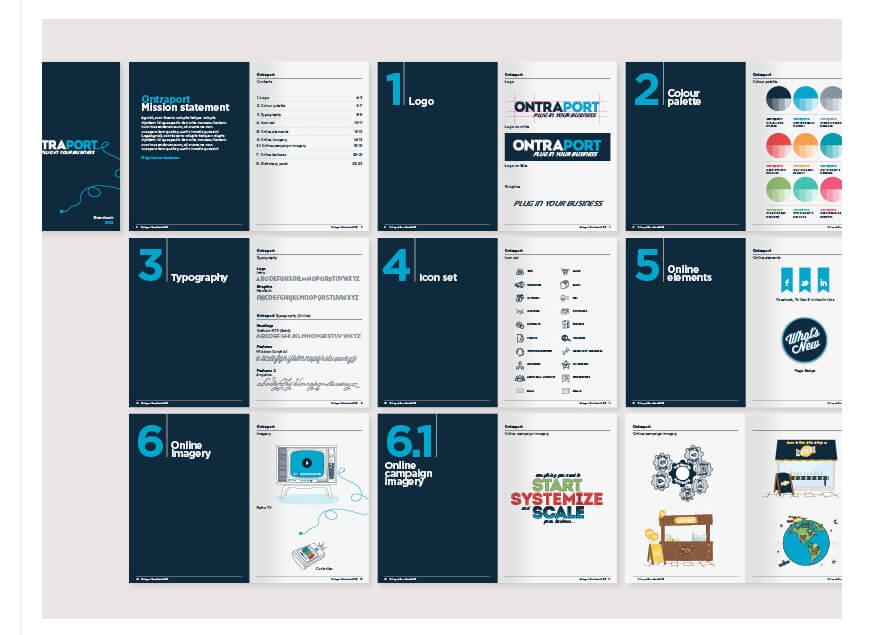
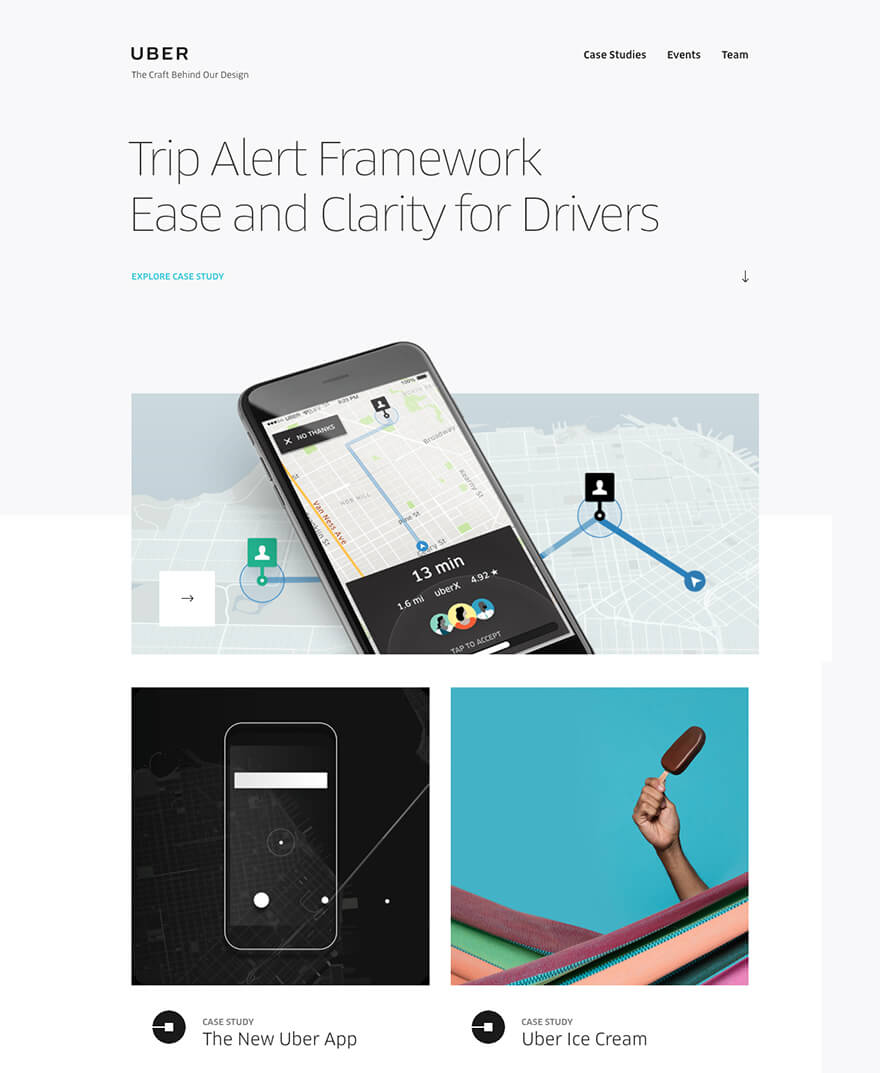
Final Thoughts
Staying on top of branding trends is crucial if you want to stay ahead of your competitors. It’s also important for continually delivering an exceptional experience for your customers and clients.
From bold colors and typography to simplified designs and more immersive interaction with your customers, there are plenty of ways to keep your brand relevant.
Keep in mind that following brand trends doesn’t mean you have to undergo a complete rebrand. Rather, it means you should find ways to incorporate these trends into your existing brand identity and strategy.
Which branding trend will you experiment with first? Let us know in the comments!
Article thumbnail image by Vmaster / shutterstock.com









While this is a really great article and hits on some important facts, it’s important to remember that branding is not just about first impressions.
Without a doubt, minimalism is most definitely the way forward, just to cut through the noise and broadcast your message succinctly to your audience.
However, when it comes to brand, a great product or service surrounded by the right people, consistent processes, and user-friendly technology is essential.
Ultimately, you could have a great looking website and operate a multitude of marketing channels as mentioned above. Nonetheless, when the rubber hits the road, if your product and service suck, that’s your brand, despite all of the superficial hype.
The likes of Amazon, eBay, Google to name but a few, are not successful because they look great, they are successful because they provide extraordinary product & service.
The look and feel of your brand is short term. However, a great product or service, the right people, consistent process, and user-friendly technology is a long-term branding that people will buy, remember and talk about. Just like Elegant Themes.
What really sets you apart from your competitors is nothing more than a simple message and delivering on it.
Love your comment! Well delivered truth talk….BAMM?
It’s very important to know. Being able to do one of them, make our business growth very meaningful. Thanks for sharing
Reddit Nordstrom really?
Any thoughts on typography for a brand? With the changing trends, I’m afraid to pick a typeface that endures.
Small quibble. Your brand is not your logo. Or the type style associated with it. To quote an old dead ad guy, David Ogilvey, “Your brand is all of the associations and projections your customers put on you—either with your input, or without it.”
However regarding your question, two thoughts.
1. Like buying a tuxedo or fine suit, pick something classic and it will last a long time.
2. Your font can transition with time as your brand progresses and as style taste change. No, not from Helvetica to Comic Sans, but for example from a very classic san serif to a newer san serif design.
I was just thinking the same thing. Although, my feeling is that as long as it’s not over the top in any one direction, it would probably stand the test of time.